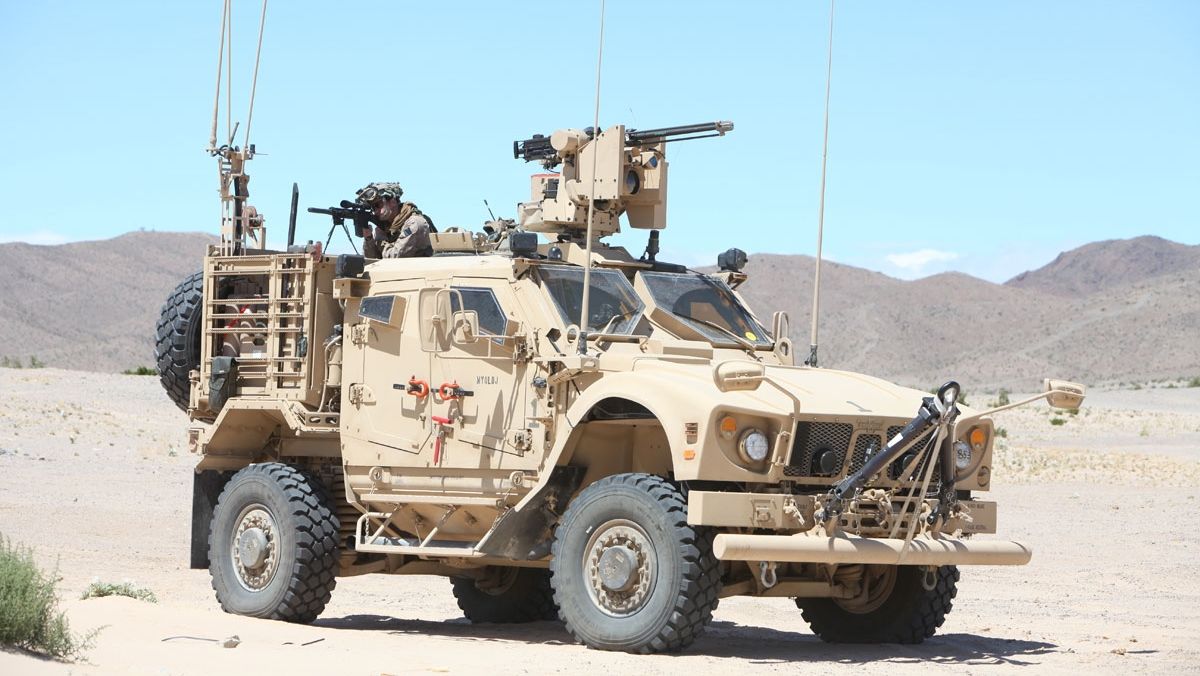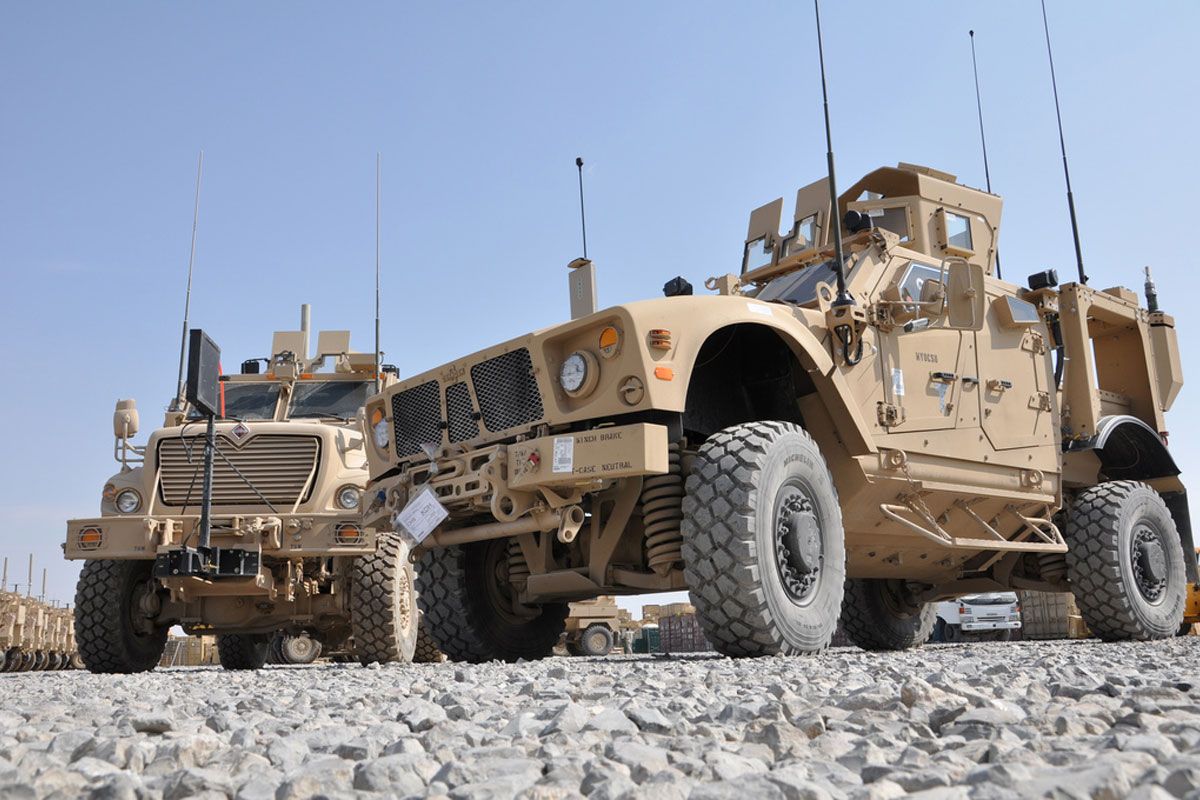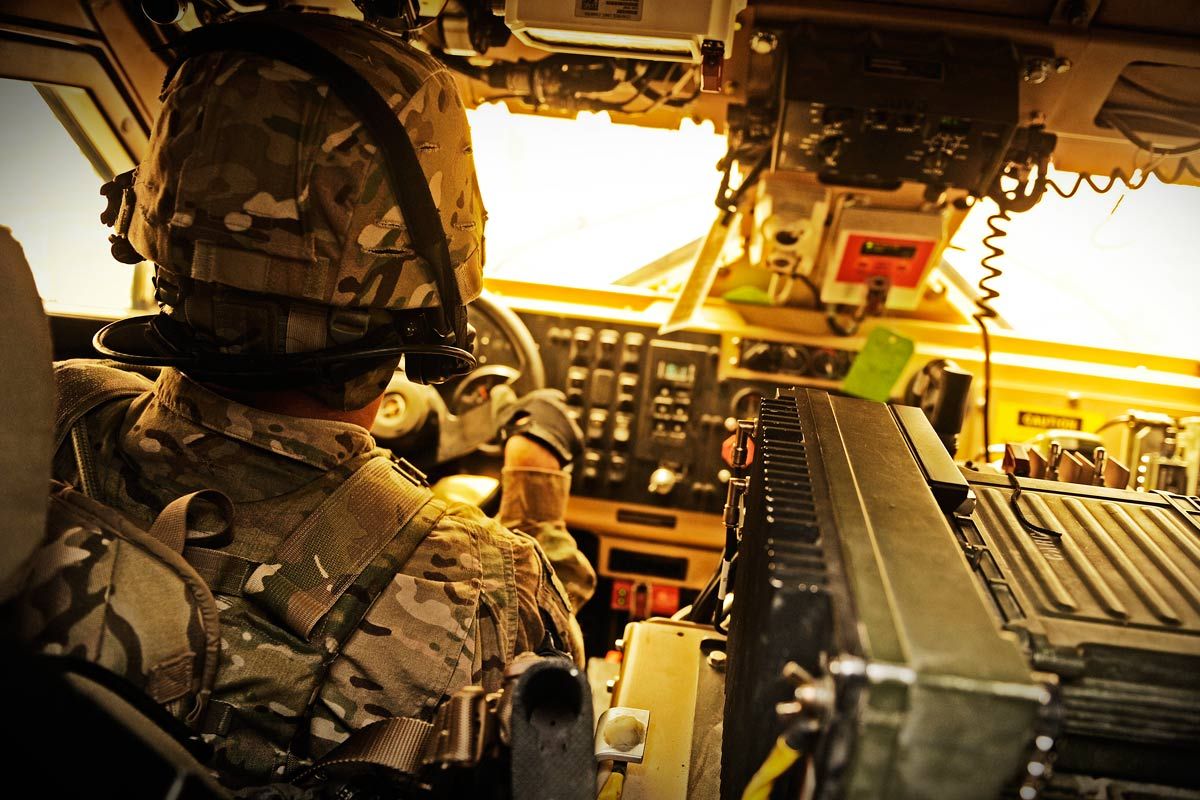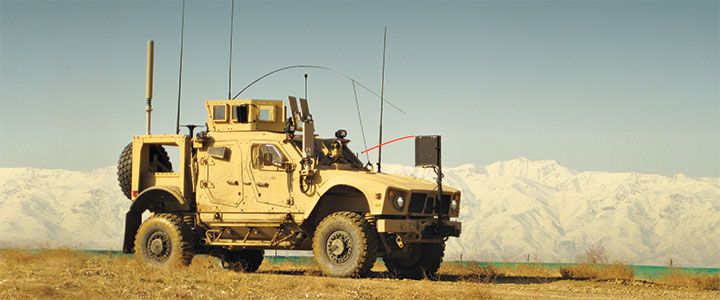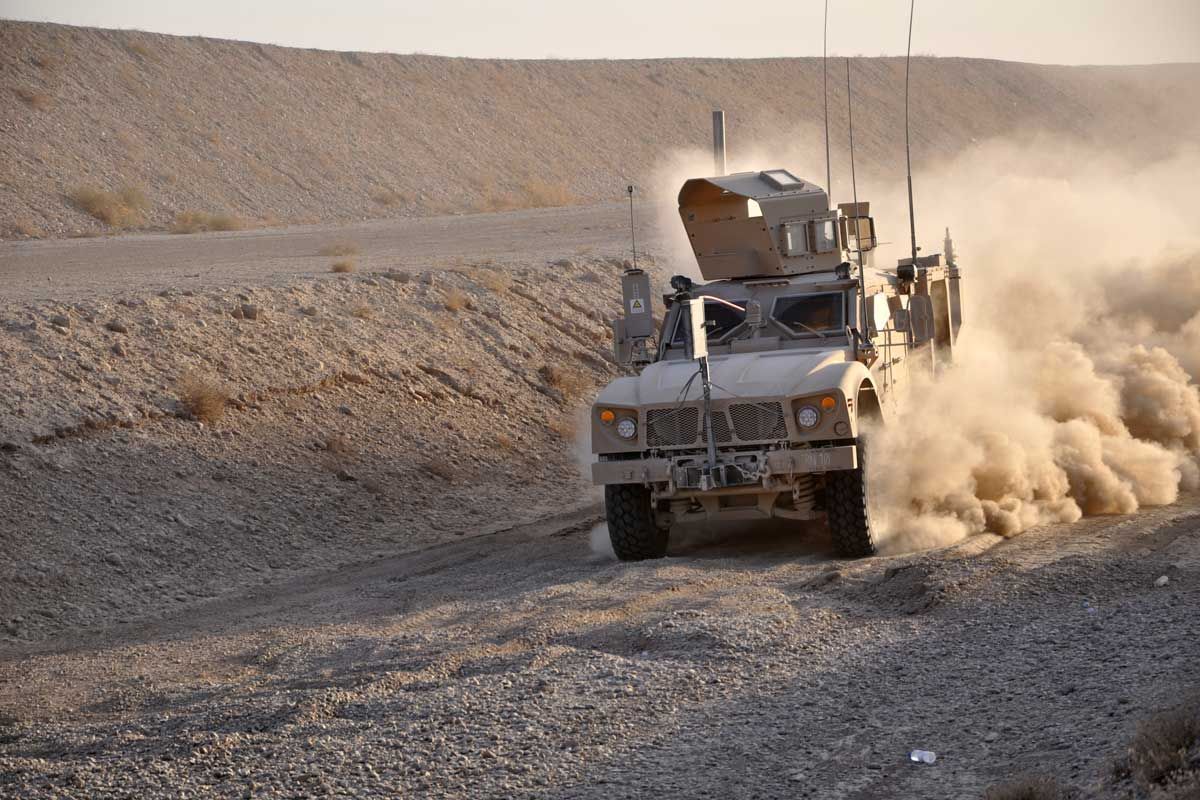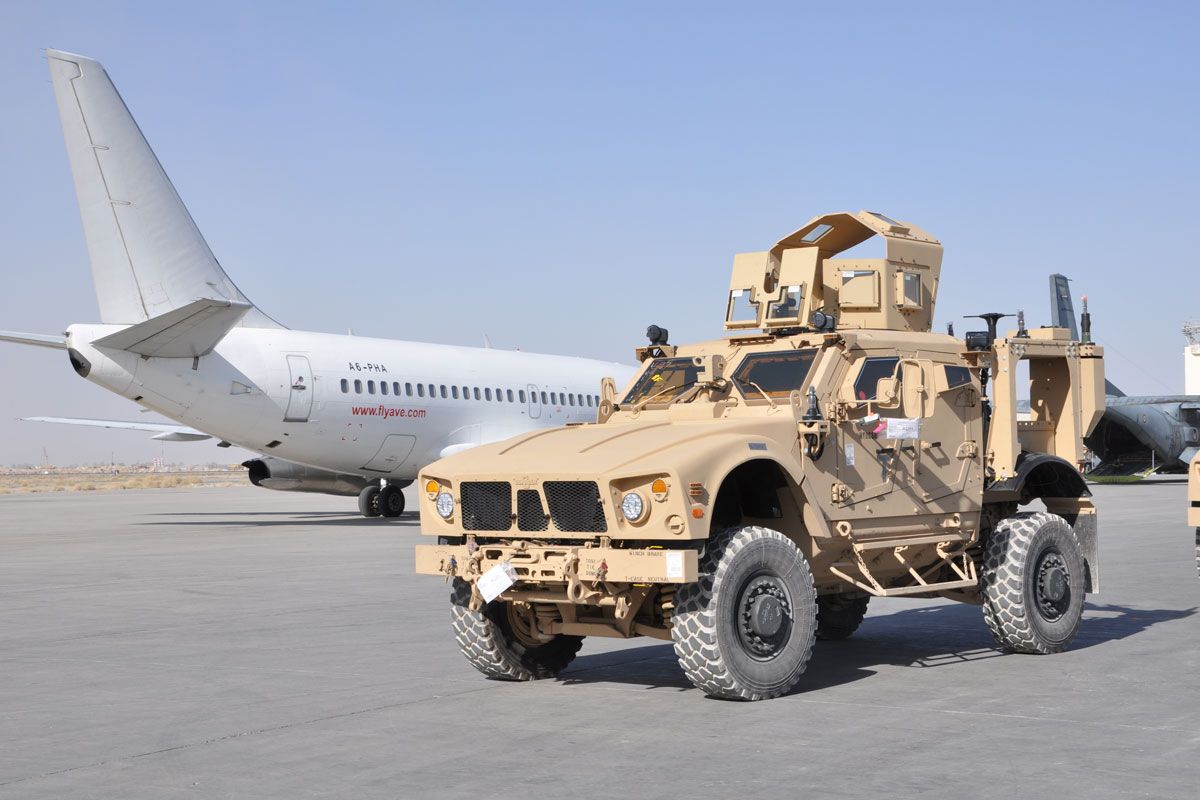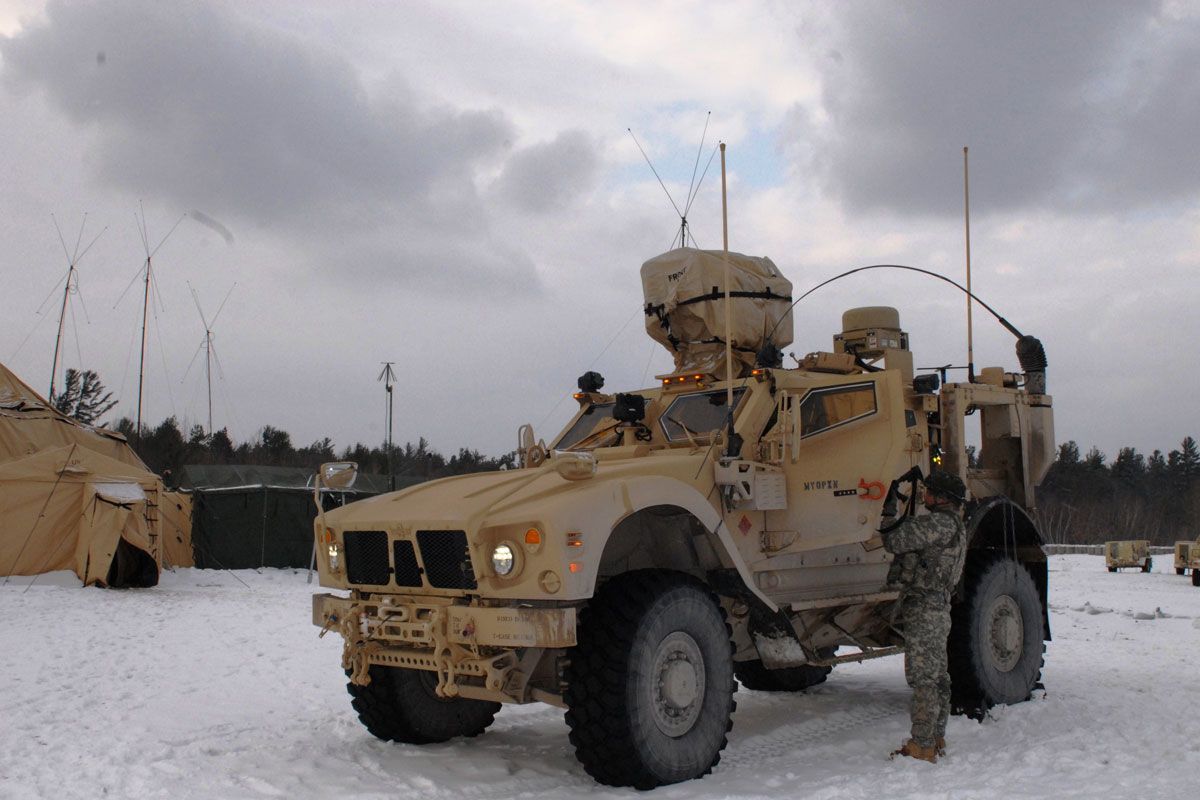It's difficult find a vehicle that does everything, even when you're spending quite a bit of money on it. First proposed in the late '70s and developed in the early '80s, the HMMWV (Humvee) made for an excellent vehicle for conventional warfare and it still does. The only trouble with that being that more recent conflicts haven't been conventional. In asymmetric warfare, essentially every vehicle potentially becomes a front-line vehicle, and vehicles built to be purely scout/support vehicles become extremely vulnerable.
The Humvee was replaced by much bigger and unwieldy Cougar MRAPs to solve the problem of lack of armoring. But the big MRAPs (Mine Resistant Ambush Protected) lacked the off-road capability of the Humvee, so a third type of vehicle needed to be developed in order to bridge this gap. Thus the M-ATV, an all-terrain version of the MRAP. From a glance it is obviously much smaller and more nimble than a Cougar MRAP, while also being much more protected than a Humvee.
Continue reading to find out more about the MRAP All-Terrain Vehicle.
Configurations
The M-ATV is a very recent vehicle, but a very significant one. It was developed specifically for use in Afghanistan, but is obviously also useful in other environments. The story started back in 2006 and 2007, when roadside IEDs were accounting for some 60 percent of American overseas military casualties. Humvees were being modified with extra armor in order to better protect them, but the Humvee is fundamentally not designed for that kind of thing, and the extra armor just didn't do enough.
A solution came in the form of a 30-year-old South African vehicle called the Casspir. The vehicle has a V-shaped hull that directs blasts outward, and was built specifically to withstand land mines. A joint British-American effort updated the technology and design of the vehicle to better withstand much bigger IEDs. The result was the MRAP, which comes in both 4X4 and 6X6 varieties and has been adapted to a variety of roles.
The design isn't completely impenetrable, and is still vulnerable to more sophisticated Explosively Form Penetrators (EFPs). But the overall effect was dramatic, with casualties from IEDs being reduced by 90 percent in 2008. Part of this was due to the fact that the vehicles were also being hit less, as bomb makers quickly realized that the IEDs which were effective against Humvees weren't going to work anymore, and bigger devices would be needed. This meant more time was needed to build them, as well as more rare materials, which also greatly increased the chances of their being caught was while still building the devices. And even so, the bigger IEDs often didn't work, and there are many stories of blasts powerful enough to lift entire 14-ton MRAPs several feet into the air which still didn't kill the occupants.
This is all great, but the design of the hull means that there is a very high center of gravity, which greatly impedes off-road ability. This wasn't much of an issue in Iraq, but Afghanistan has much more mountainous terrain and not much in the way of roads. So a smaller and lighter version of the vehicle was needed, with development more or less immediately after the effectiveness of the bigger vehicles was shown. The first M-ATVs were delivered to Afghanistan at the end of 2009. More than 10,000 units have now been built, and while this is less than half of one percent the number of Humvees produced, that balance will likely shift somewhat in coming years.
The 370-horsepower, 7.2-liter six-cylinder turbodiesel engine is noticeably more powerful than the slightly smaller powerplant in the Humvee. The M-ATV is a much heavier vehicle, but the engine was made for use in the even bigger MRAPs, and the M-ATV is much easier to drive fast than most vehicles that offer this level of armoring. And unlike the Humvee, the 65mph top speed is electronically limited, rather than just the fastest it will go. But speed isn't the primary function of the M-ATV; it was built for rough terrain, and the four-wheel independent suspension with a lot of travel can take a tremendous amount of abuse.
Design and use
Since the M-ATV was built to serve the same functions as a Humvee, it seats the same 4 plus 1 gunner. The interior is a bit more cramped, but so is an Escalade->ke245 when compared to the weirdly huge interior of a Humvee. The real disadvantage of the M-ATV's design, compared to the Humvee, is how much more difficult it is to get in and out of. Ingress and egress don't really get any easier than with a Humvee. But you aren't really meant to fight from a Humvee, at least that's not how it was designed, so quick egress is important in the event of enemy contact. Since you can fight from the M-ATV, this isn't as critical, but it's still a pain, especially when loaded with gear ("full battle rattle"). Some of the design flaws from the bigger MRAPs have been addressed as well, and the M-ATV is a better thought out machine.
The M-ATV will also carry all of the same weaponry as the Humvee, including a light machine gun, heavy machine gun, Mk 19 automatic grenade launcher or either a TOW or MILAN anti-tank missile system.
Conclusion
If the M-ATV ever does replace the Humvee, it won't be anytime soon. A Humvee costs about half of what the newer vehicle costs, and there are still plenty of uses for it away from the threat of IEDs. That said, the Humvee cannot hold a candle to the M-ATV as a front-line vehicle, and the armored trucks have already saved countless lives. No unit that has access to them could ever possibly justify using a Humvee instead when there is a risk of IEDs or ambush, and so the M-ATV's future is secure as well. It's an impressive machine, and one which those of us in the military are glad to have.

